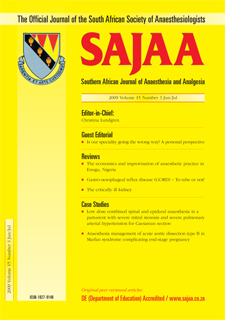Gastro-Oesophageal Reflux Disease (GORD) – To Tube or Not?
Keywords:
Gastro-Oesophageal Reflux Disease (GORD)Abstract
Gastro-oesophageal relux disease (GORD) is the most common gastrointestinal diagnosis recorded during visits to outpatient clinics. In the United States, it is estimated that 14 to 20% of adults are affected. This figure may, however, correlate to an overestimation of the disease prevalence. The disease having a nebulous definition, is based on self-reported chronic heartburn and it has been shown that only symptoms of moderate intensity occurring at least once a week have a significant impact on quality of life. A current definition of the disorder is a “condition which develops when the reflux of stomach contents causes troublesome symptoms (i.e. at least two heartburn episodes per week) and/or complications.” It is caused by the retrograde passage of gastric (or gastroduodenal) contents through the cardia into the oesophagus. From a clinical standpoint, the term ‘GORD’ encompasses all individuals who are at risk of physical complications as a result of exposure to gastro-oesophageal reflux or who experience a clinically significant impairment of health-related wellbeing due to reflux-related symptoms (following adequate reassurance of their benign nature).Downloads
Issue
Section
License
By submitting manuscripts to SAJAA, authors of original articles are assigning copyright to the SA Society of Anaesthesiologists. Authors may use their own work after publication without written permission, provided they acknowledge the original source. Individuals and academic institutions may freely copy and distribute articles published in SAJAA for educational and research purposes without obtaining permission.
The work is licensed under a Creative Commons Attribution-Non-Commercial Works 4.0 South Africa License. The SAJAA does not hold itself responsible for statements made by the authors.

